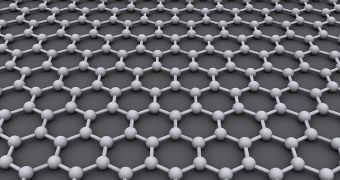In a festivity held on October 5 at the Royal Swedish Academy of Sciences, in Stockholm, the recipients of the 2010 Nobel Prize in Physics were announced.
Expert physicists Andre Geim and Konstantin Novoselov, both from the University of Manchester, in England, were awarded the prestigious award for developing a low-tech means of producing graphene,
This material was only discovered in 2004 at the university, by a team that was led by Andre Geim and Kostya Novoselov. They were able to prove graphene existed in an experiment.
The Nobel committee awarded the two with the prestigious science award “for groundbreaking experiments regarding the two-dimensional material graphene,” the official announcement reads.
Initially, the team managed to produce graphene by repeatedly cleaving graphite – the material making up pencil lead – using adhesive tape. They obtained layers of graphene on the tape as a result.
Graphene is basically a single-atom-thick layer of carbon, that has a hexagonal, honeycomb-like structure. The material has outstanding physical and chemical properties.
The international scientific community was amazed by the multitude of possibilities associated with the newly-found material.
Potential applications included producing nanoribbons, transistors, integrated circuits, transparent conducting electrodes. biodevices, single-molecule gas detectors, transparent materials and ultracapacitors.
As evidence of the far-reaching implications that discovering this material had on the world, Thomson Reuters Web of Science reports that the 2004 paper which described the finding was cited more than 3,000 times by other research papers.
The original description of the research appeared in the top-rated journal Science.
When contacted by the committed, Geim, who is 51 years old, said: “I didn't expect the Nobel Prize this year. I'll just try to muddle on as before.”
As for Novoselov, 36, he is the youngest physics laureate since Brian D. Josephson won the Nobel Prize in Physics in 1978, when he was 33.
The Prize brings, in addition to international fame and recognition, a $1.5 million money award, the equivalent of 10 million Swedish kronor.

 14 DAY TRIAL //
14 DAY TRIAL //